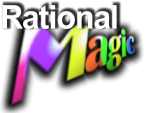

| Adolf. By Osamu Tezuka. Translated by Yuji Oniki. San Francisco, CA: Viz Comics, 1995. 263p. $16.95. ISBN 1-56931-058-0. |
|
GENRES: AUDIENCE: SYNOPSIS: Adolf is the story of three individuals with that name: Hitler; a Jewish boy living in Japan; and a half-German, half-Japanese boy whose father is a German (and Nazi) diplomat at the German consulate in Kobe. However, the story starts with, and is framed by, the experiences of Sohei Toge, a track star-turned-reporter. In Berlin in 1936 to cover the Olympics, Sohei is contacted by his brother, Isao, an exchange student. Isao has some momentous news for Sohei, who promises to come over quickly, but he is delayed by an exciting pole-vaulting match. He arrives to find Isao's apartment in a shambles and Isao dead in a tree, having been stabbed and pushed out the window. Two clues: a piece of paper with the letters "RW" written on it, and white powder (plaster) under Isao's fingernails. The police come quickly but refuse to let Sohei accompany them to the station; and as he rides in a taxi to the station, he thinks back to an unsolved murder in Japan six months ago, in which a murdered geisha also had powdered plaster under her fingernails. Much to Sohei's horror, the police disavow any knowledge of Isao's murder and body. Even worse, when he returns to the apartment building, the manager claims that no Japanese person has ever lived there, and the apartment contains a German man who insists that he's lived there for years. The Japanese consulate refuses to get involved, not wishing to offend their allies, and Sohei's questioning of Isao's neighbors comes to naught. In desperation, Sohei places an ad in a newspaper asking "RW" to call. He gets two responses: a farmer on the outskirts of the city, and a beautiful woman, Rita Weber, who claims to have been Isao's lover. Rita blames Isao's death on his Communist leanings and abruptly departs, so Sohei rushes over to the farmer's house--only to find the farmer and his family brutally murdered, and an ambush awaiting him.... The rest of Sohei's story finds him shadowed by Party officials as he struggles to make sense of things, learns some terrible secrets, and ultimately finds out what's going on at the price of at least one more life. [Sorry, there plot twists and surprises that I don't want to reveal.] At the same time, in Kobe, the two young Adolfs are best friends. The Jewish Adolf Kamil is a large, rough-and-tumble boy who considers himself Japanese (he was born and raised there), while the German-Japanese Adolf Kaufmann is a small, well-bred child devoted to his parents. But his father insists that his son stay away from the "inferior" Jew. Adolf Kaufmann is puzzled and reluctant to obey. Then his father meets with a policeman who essentially accuses him of the murder of the geisha. Kaufmann vehemently denies involvement despite having been seen with the geisha--he claims to have procured her services for embassy members--and his wife Yukie believes him. But as they make love that night, the mood is spoiled as Kaufmann remembers killing the geisha. A year and a half later, Adolf Kamil overhears a secret conversation between his father and some guests. They claim to have information about Adolf Hitler that will lead to his downfall, and Adolf Kamil overhears "Hitler is a Jew" before a passing parade obscures the rest of the conversation. His father catches him listening and screams at him never to repeat what he's heard, but the words and implications of the statement torment him. Finally, to "confess" to God, he writes the phrase on a piece of paper and hides it in a hole in a tree. Meanwhile, in front of guests, Adolf Kaufmann defies his father, who wants him to join the Hitler Youth. Adolf refuses, citing their willingness to kill Jews. Adolf is punished, but Yukie, whose disapproval of Adolf Kamil stems from his rough ways rather than his religion, promises to do what she can to keep her son out of the Hitler Youth. Later, Kaufmann is criticized for his mishandling of the geisha incident, and he is charged with finding a critical secret document (one that Isao Toge had been murdered for in Berlin and which the geisha was thought to have possessed) that has apparently been sent to a member of the Jewish community in Kobe. Kaufmann has no direct power over the Jews, who live peacefully in Kobe, but he can harass them indirectly. About a year later, during a heavy rain, Kaufmann attempts to get the document's whereabouts out of a Jewish heroin addict (on the assumption that all Jews know what's going on in the community). But the man doesn't know. Meanwhile, Yukie is approached by the investigator who had spoken to her husband about the geisha murder. The man, who is being transferred from the case, shows Yukie a photo of Kaufmann with the geisha and presents convincing evidence of her husband's guilt. She is terribly shaken and refuses to believe, but after the man leaves, she cannot stop herself from searching her husband's study, and finds more evidence. When Kaufmann returns, Yukie tearfully confronts him. He slaps her but has to leave abruptly when he learns that his heroin addict has escaped--the warehouse where he had been held was destroyed by a landslide triggered by rain. He and a compatriot search throughout the night. The flooding grows worse. Yukie is in torment until her husband returns, coughing, soaked, and weary. Relieved to see him safe, she puts him in a hot bath and then in bed, but he is clearly ill. Later that day, Adolf Kaufmann is trapped at school by the flood waters, and a small landslide hits the school--and knocks down the tree where Adolf Kamil had hidden his "confession." Adolf Kaufmann finds the piece of paper and recognizes his friend's handwriting. Foolishly, he asks his father if Hitler is a Jew. In a feverish rage, Kaufmann demands to know who wrote the note, but his son won't say, so Kaufmann hits his son several times before collapsing. He is rushed to the hospital, clearly about to die. As he is being given his last rites, he tells one of his Nazi compatriots, Gerhard Michet, that his son must be the key to the missing document. After Kaufmann dies, Michet puts more and more pressure on Adolf to reveal where he got the note. Adolf refuses to compromise his friend, and when it is announced that he WILL be going to Germany to become a Hitler Youth, he runs away. Michet is killed as he confronts Adolf on a bridge, but the boy is still bundled up and sent away. EVALUATION: My summary can only hint at what a rich, detailed, powerful story this is. Yet it is always easy to follow and understand. The characters are well conceived and generally transcend stereotypes. For example, Sohei Toge is basically a good person, but he performs a despicable act during his quest for Isao's killers (though the person on the receiving end of that act deserved it). Herr Kaufmann is a devoted husband and father who has been twisted by the rise of Nazism and who ultimately cannot keep that twist out of his personal life. In this first book, Adolf Kamil is more interesting than Adolf Kaufmann, as he doesn't have to spend much of his time refusing to answer adults' questions, but it will be extremely intriguing to see how Adolf Kaufmann emerges from the intensive Nazification awaiting him, and how he behaves towards his friend when he returns to Japan. (Considering that at the beginning of the book Sohei is telling the story as the only survivor, one can assume an ultimately tragic ending.) The story also sheds light on the interesting fact that Jews could live safely in Japan and, indeed, had fled there to escape Nazi persecution. Tezuka has been known for his cartoony style, and according to the excellent introduction by Frederik L. Schodt (the Western expert on manga), Adolf (which is made up of black-and-white line drawings) is relatively realistic for him. It's still fairly cartoony, but I don't find that a problem; for one thing, most of the stylistic exaggerations appear only in the beginning of the story, and for another, the characters are so well depicted that it's easy to tell them apart--something that many realistic artists can't pull off. (Also, the physical exaggerations given to the orating Hitler are entirely appropriate for that evil clown.) However, Schodt suggests that the dearth of translated Tezuka stems from his typical style, to which I respond: <sigh>. (Honestly, given most American comics readers' tastes for the "realistic" art in superhero comics and the flashier manga, it drives me crazy that they tend to sneer at other styles.) The depictions are cinematic and often quite impressive. One of my favorite scenes is when Kaufmann is making love to his wife--the scenes of their tender embrace are interspersed with scenes of him killing the geisha in such a way as to make one think that Kaufmann is just a moment away from giving Yukie the same treatment. Aside from not having the subsequent books available to read, I have a few quibbles: the German family is moved into Isao's old apartment awfully fast; Adolf Kaufmann spends a bit too much time verbally defending himself or his friend; and in a few word balloons, some words weren't wrapped well and were cut off in funny places. But these are oh-so-minor points. Just for being a rare English-language example of Tezuka's work, this book deserves a place in all adult and teen manga collections; but for being an outstanding story as well, it should be part of a core collection of graphic novels. NOTE: According to Schodt, Adolf was one of the first manga books in Japan to be published in hardcover and to be sold as literature rather than plain manga. It won the Kodansha Manga Award in 1986 and is considered one of Tezuka's finest works. |
Return to Rational Magic Home
